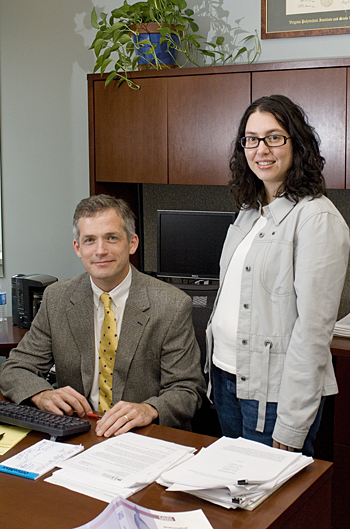
Co-authored by Michal Herzenstein, assistant professor of marketing at UD; Rick Andrews, chairperson and professor of business administration at UD; Utpal Dholakia, associate professor of marketing at Rice University; and Evgeny Lyandres, assistant professor of finance at Rice University, the study finds that individual lenders are less likely than financial institutions to discriminate against borrowers on factors like gender and race, and that peer-to-peer lending is generating enthusiasm in the micro-financing sector.
“What we were looking at in our study was what makes borrowers successful and what makes them unsuccessful,” said Herzenstein. “And what we found--the main finding of our paper--is that although there is still a lot of discrimination in institutional lending, there is less discrimination in peer-to-peer lending.
"The reason we feel there is less discrimination in this outlet is because when people lend their own money, they're more interested in knowing whether the person can pay it back compared to what their race or gender is. So what we've found is that when it's their own money, people become more rational compared to an institution, because when you lend your own money, it's going to hurt if someone defaults.”
The study, Herzenstein said, analyzed one month's worth of data (5,370 postings) collected from the online lending site Prosper.com, which operates like an Ebay auction for loans and incorporates communities and discussion forums, similar to Facebook. Borrowers eager to get a loan from $1,000 (the minimum allowable amount) to $25,000 (the maximum allowable amount) post all their financial information, including any existing loans and incomes, and then Prosper obtain their credit score from Experian, after which Prosper assigns borrowers a score from AA (good credit) to HR (high risk). Borrowers then list the parameters of their loan--how big a loan they want, how much interest they're willing to pay and how long they want the bidding on their listing to last. Though not necessary, it also helps if they include human-interest information about who they are, why they want the loan and what the funds will be used for, and how they plan to pay it back (including their income and other monthly expenses).
The next step is up to the lenders, who then assess the profile, consider the profitability of the interest rate, and make--or don't make--an offer.
To increase a borrower's chances of success and decrease a lender's risk, one loan request, Herzenstein explained, also has the option of being fulfilled with several microloans from several different lenders; and if the loan is fulfilled before the auction time expires--for example, if the bidding time has been posted as lasting 10 days but the loan has been accrued in five--then the interest rate also has the option of dropping while the bidding continues for the remaining five days.
It's this flexibility, Herzenstein said, which benefits both the lender and the borrower; and coupled with the current low interest rates on CDs and other investment options for people with surplus funds, the online trend is blossoming. In the past few years, sites like Prosper.com have multiplied, and traffic to them, as well as bids placed on them, have grown exponentially.
“The reason why a lender lends is to get a good interest rate on the loan,” Herzenstein said, “and the main incentive for using a site like Prosper.com is that this outlet gives a lender a higher interest rate compared to other outlets available now, such as CDs and savings accounts. The downside is that it can be risky, however, because the loans are unsecured, meaning that a lender has no recourse if a borrower defaults.”
With the industry still relatively new, Herzenstein said that such defaults aren't unheard of, even with the Web site's best efforts to confirm borrowers' identities and credit ratings. However, she added, the number of defaults is lessening.
“Lenders are learning,” she said, “and there is a learning curve. At the beginning, lenders would often lend money to anyone who told a nice story--and they paid for those stories. Now you don't see that anymore. People have become more rational and will only lend to borrowers who have a good chance of paying the money back.”
And while good story still can carry the power to tug on lenders' heartstrings and loosen their purse strings, Herzenstein added that despite the overall rise in online lending, only about 10 percent of all loan auctions actually get funded. “In our data sample, the success rate was only about 10 percent,” she said, “because in the end, it's zero or 100 percent: Either a borrower gets the entire amount funded by the end of the auction or nothing at all.”
However, borrowers who fail to secure a loan the first time can relist with different terms indefinitely, whether those terms mean asking for less money or sweetening the interest rate.
“Really, it's a nice outlet for both borrowers and lenders,” Herzenstein said, “and it's going to be more and more prevalent in the future. Since its founding in late 2005, Prosper.com has generated more than $150 million in loans, and it's going to grow tremendously in the next 10 years. The estimation is that by 2017, the amount of loans generated by the site will probably be close to $9 billion. Definitely, this is where the future is.”
The study, which Herzenstein, Andrews and the two Rice University professors submitted to a distinguished marketing journal in mid-June, is now under review for possible publication.
Article by Becca Hutchinson
Photo by Kathy Atkinson

